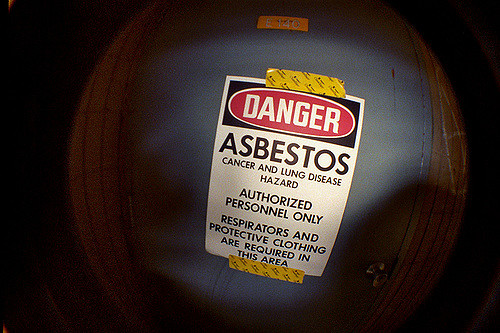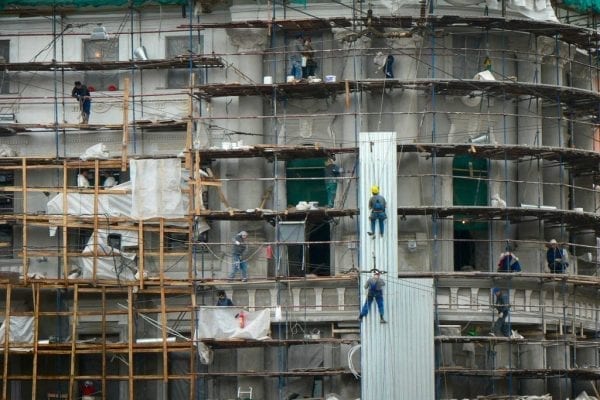A March report from the CDC shows that people are still dying in large numbers from a building-related threat most people think belongs to history: Asbestos. According to the report, more than 45,000 people died between 1999 and 2015 from malignant mesothelioma, a form of lung cancer caused by exposure to asbestos fibers.
The EPA, CDC, OSHA, and other regulatory agencies have known about and attempted to control the dangers of asbestos exposure since 1971, when OSHA issued its first asbestos exposure limits. But despite heavy regulation, the material continues to be used in some new building materials and poses health and safety problems for building occupants and construction workers.
Asbestos becomes dangerous when it is disturbed by construction or destructive weather (such as hurricanes), or when it crumbles due to age. Its dust enters the atmosphere and is breathed in by anyone occupying the space. In the lungs, asbestos fibers cause damage that may not show up for years–but when it does, it is often deadly.
While construction workers are among the most at-risk populations, asbestos affects anyone who breathes it in. Many of the recent mesothelioma deaths are among the elderly population, reflecting exposure that occurred many years ago. However, individuals under the age of 55 continue to die from the disease, making it clear that occupational exposure is unfortunately not a thing of the past.
Property owners and managers should take note. Even if your facilities are relatively new, the odds are high that their construction included some type of asbestos-containing materials. The only way to be sure, is to conduct an asbestos survey, which should be done prior to any major renovations or any other activities which could disturb asbestos-containing building materials.
Additionally, you need to be aware that while renovations are a major risk factor, deadly asbestos dust can be released in other ways as well. Hurricane season is just around the corner, and with it, the increased risk of building damage. Any building damage can disturb asbestos-containing materials and release asbestos fibers into the air.
In fact, in some cases, a disruptive event isn’t even necessary to release asbestos fibers. As asbestos-containing materials age, they can become friable, and crumble to dust at the slightest touch. That’s what happened during renovation of the Ca’ d’Zan a few years ago. Old asbestos materials simply deteriorated and the dust became airborne, exposing dozens of workers to the danger before it was discovered and remediated.
The good news is that the dangers presented by asbestos can be eliminated with just a few simple steps:
- Always conduct an asbestos survey prior to renovations or demolition regardless of the age of the building
- Periodically survey buildings older than ten years for evidence of deteriorating asbestos
- Consider an asbestos survey prior to hurricane season, to assess the potential for asbestos problems in the event of property damage
- When asbestos is detected, hire a qualified firm to design remediation plans and oversee the abatement
These simple steps keep occupants and workers safe while in your facilities, and give everyone involved with your property peace of mind. GLE Associates conducts asbestos surveys for hundreds of clients in every sector throughout the United States. Contact us today to schedule yours.






